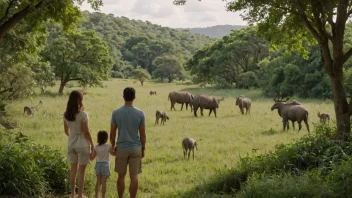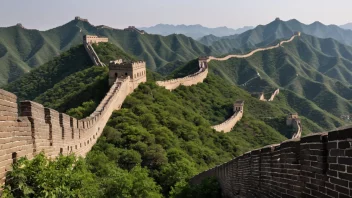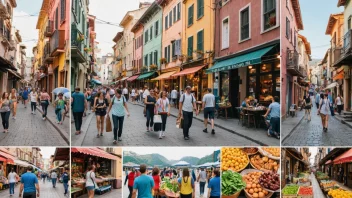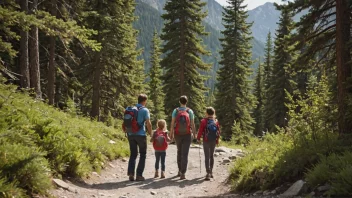Madagascar, the fourth largest island in the world, is a treasure trove of biodiversity and unique ecosystems. In this article, you will learn how to explore the stunning landscapes, diverse wildlife, and rich cultural heritage of Madagascar. From the otherworldly Baobab trees to the enchanting lemurs, this guide will provide you with a step-by-step approach to experiencing Madagascar off the beaten path.
Step 1: Research Madagascar's Unique Ecosystems
Before you embark on your journey, it’s essential to familiarize yourself with Madagascar's unique ecosystems. The island is home to various habitats, including:
- Tropical Rainforests: These lush areas are rich in flora and fauna, including countless endemic species.
- Dry Deciduous Forests: Found in the western regions, these forests are characterized by trees that lose their leaves in the dry season.
- Spiny Forests: Located in the south, this ecosystem is famous for its unique succulent plants, including the iconic octopus tree.
- Coral Reefs: The surrounding waters are home to vibrant coral reefs, making it a perfect destination for snorkeling and diving.
Step 2: Choose Your Destinations Wisely
Madagascar offers a range of destinations that showcase its unique ecosystems. Consider visiting:
- Andasibe-Mantadia National Park: Known for its rich biodiversity and the famous Indri lemurs, it’s an ideal spot for wildlife enthusiasts.
- Isalo National Park: This park features stunning sandstone formations, deep canyons, and natural swimming pools.
- Avenue of the Baobabs: A must-see for its iconic trees, this location offers breathtaking views at sunrise and sunset.
- Nosy Be Island: Famous for its beautiful beaches and coral reefs, it’s perfect for relaxation and water activities.
Step 3: Plan Your Itinerary
Once you’ve selected your destinations, plan your itinerary. Consider the following tips:
- Allocate Enough Time: Madagascar is vast, and travel times can be lengthy due to road conditions. Make sure to spend at least 2-3 days in each location.
- Mix Nature and Culture: Include visits to local villages or markets to experience the rich culture and heritage of the Malagasy people.
- Be Flexible: Weather and transportation can be unpredictable, so allow for some flexibility in your plans.
Step 4: Prepare for Your Adventure
Preparation is key to fully enjoying your trip. Here’s what to do:
- Pack Appropriately: Bring lightweight clothing, sturdy hiking shoes, and insect repellent. Don’t forget a good camera!
- Learn Basic Malagasy Phrases: Knowing a few phrases can enhance your interactions with locals.
- Travel Insurance: Ensure you have travel insurance that covers medical emergencies and cancellations.
Step 5: Engage with Local Communities
Engaging with local communities enriches your experience. Here’s how:
- Stay in Locally-Owned Accommodations: Opt for guesthouses or eco-lodges to support local economies.
- Join Guided Tours: Consider hiring local guides who can provide insights into wildlife and culture.
- Respect Local Customs: Be mindful of cultural practices and traditions while interacting with communities.
Step 6: Embrace the Adventure
As you explore Madagascar, keep an open mind and embrace the adventure:
- Take your time: Don’t rush your experiences; savor the beauty of the landscapes and the richness of the wildlife.
- Capture Memories: Document your journey through photographs and journaling.
- Be Eco-Conscious: Practice responsible tourism by minimizing your environmental impact.
In summary, to explore the unique ecosystems of Madagascar, start by researching the island's diverse habitats, select key destinations, plan a flexible itinerary, prepare thoroughly, engage with local communities, and embrace the adventure that awaits. Madagascar offers an unparalleled travel experience, so take the plunge into this magical island!






